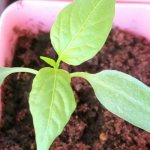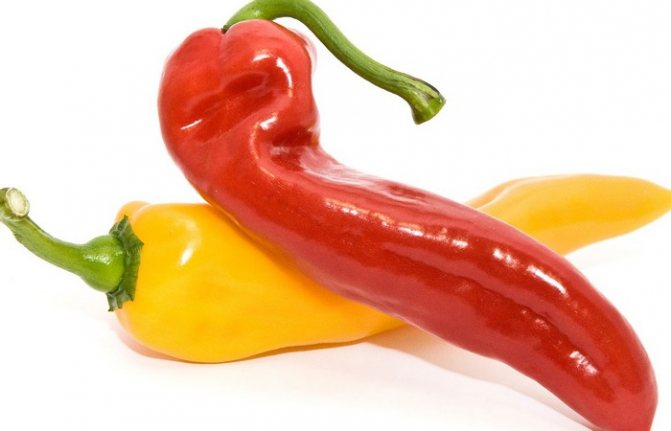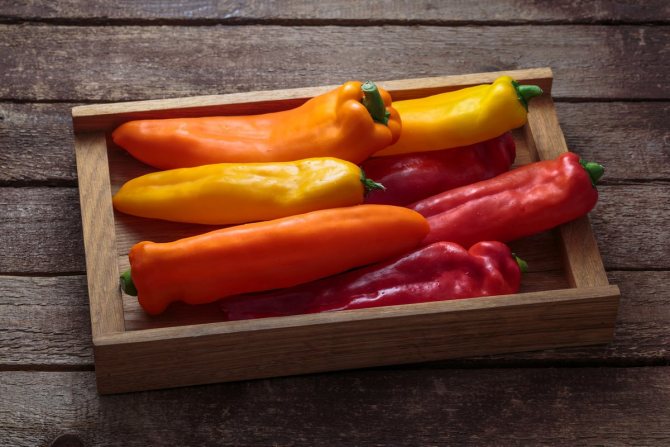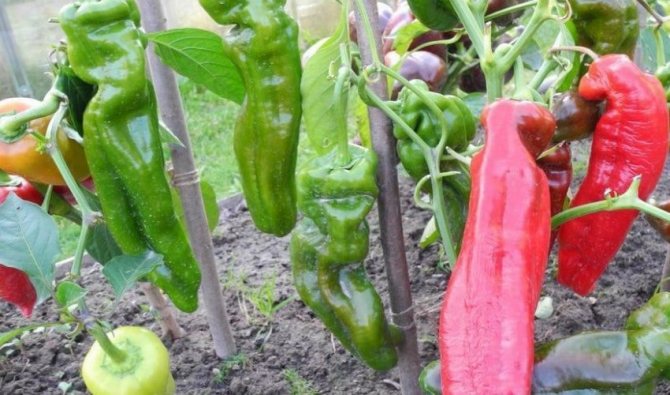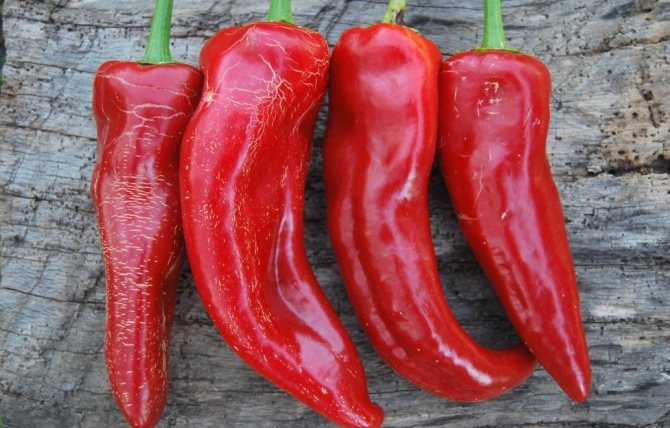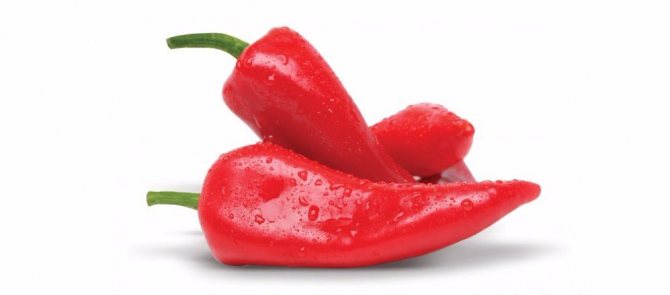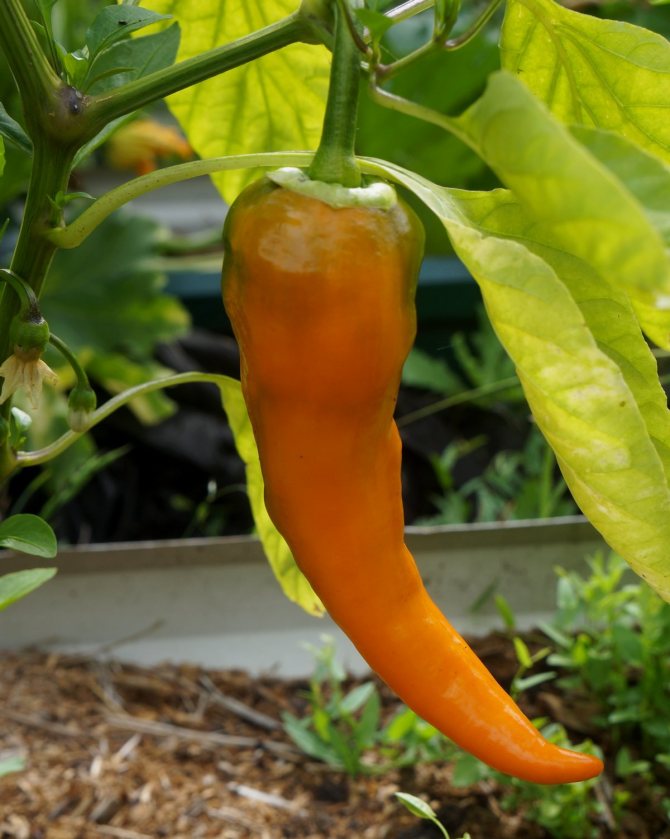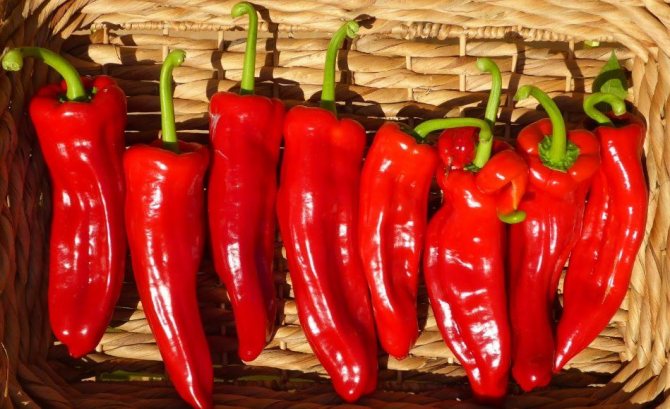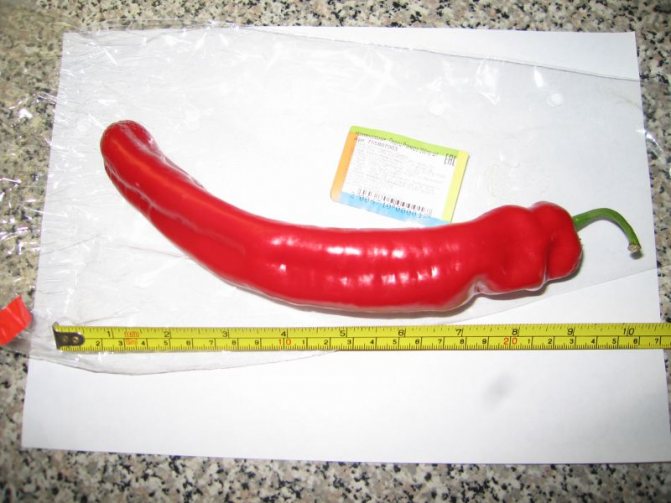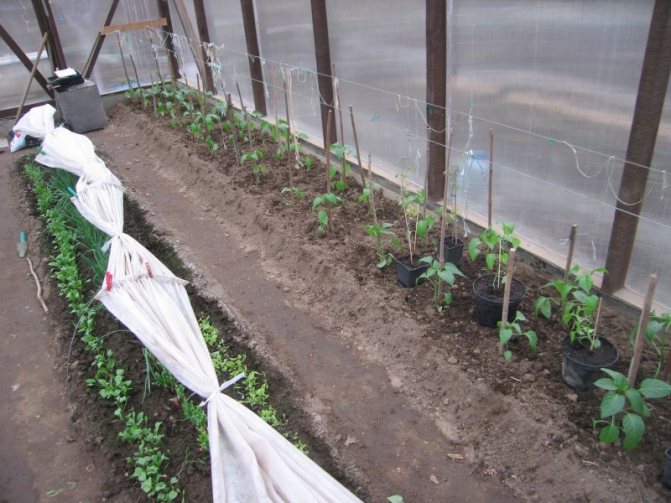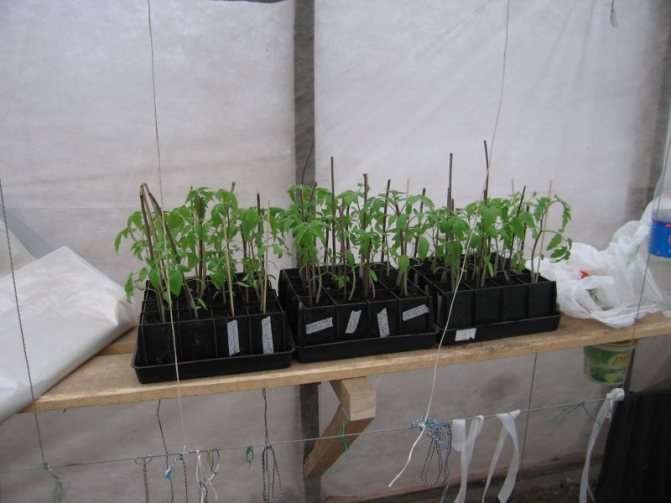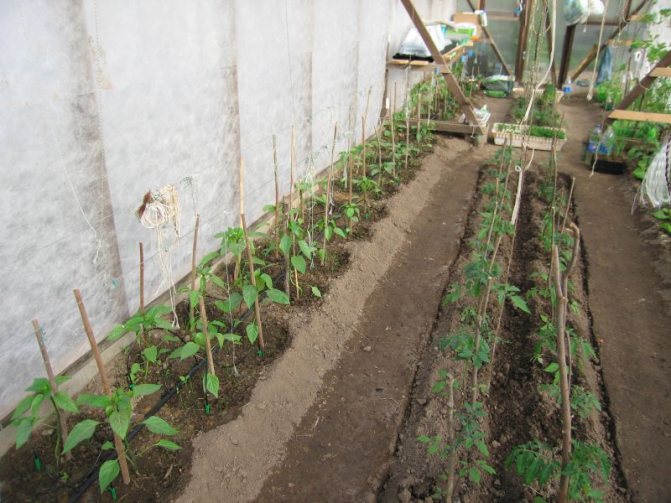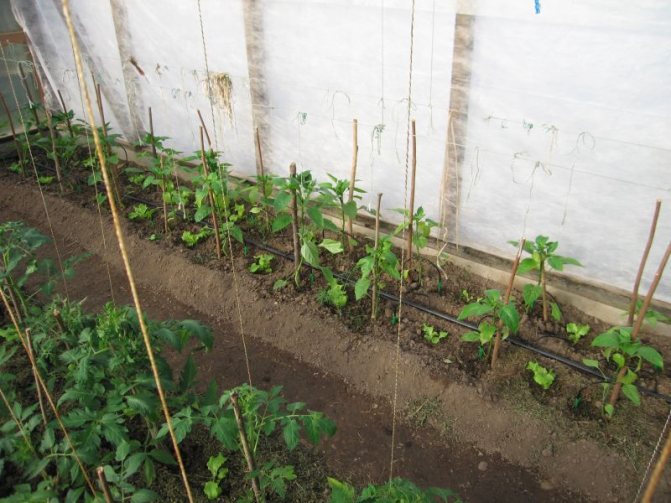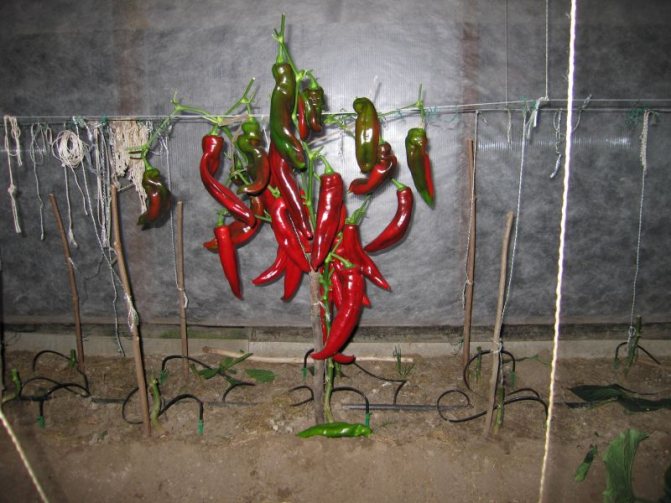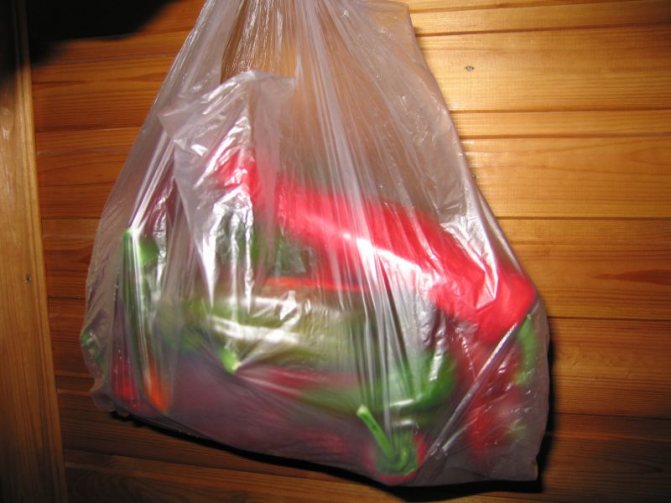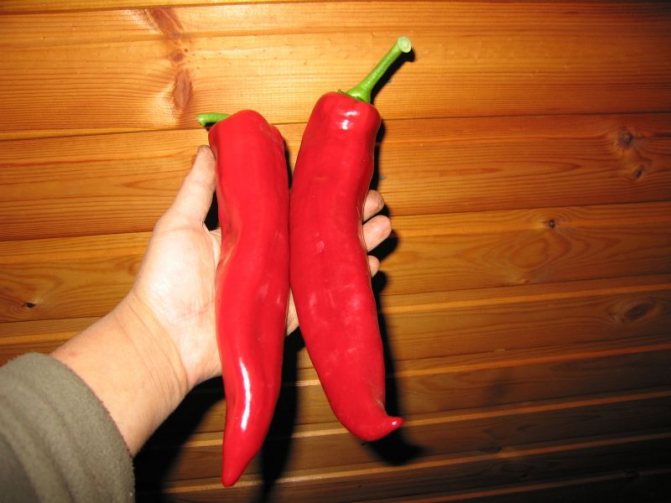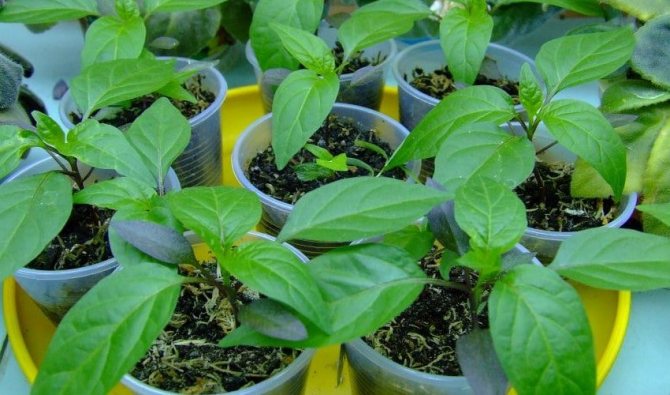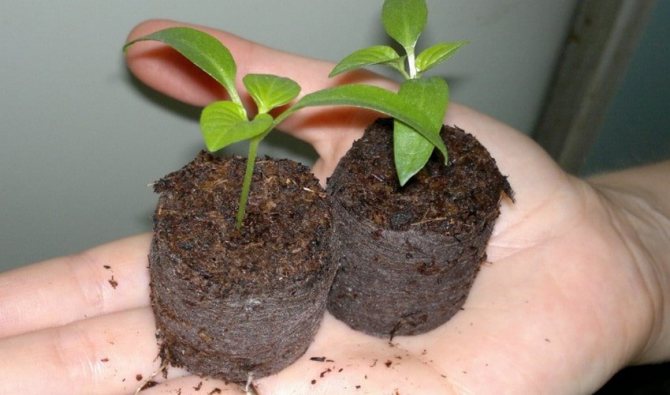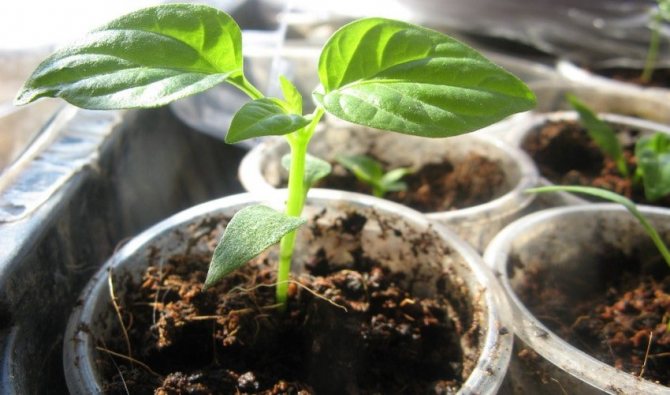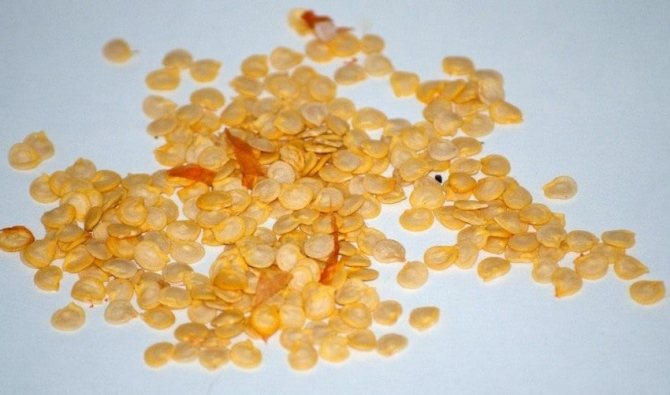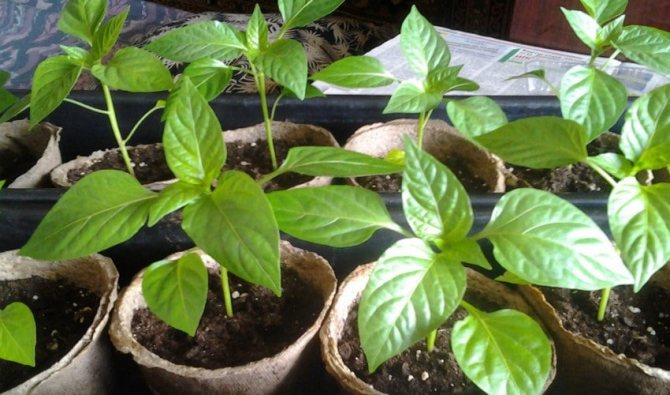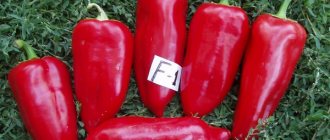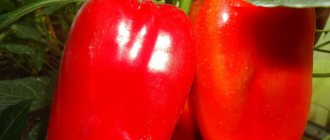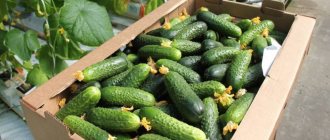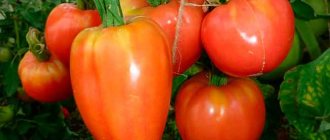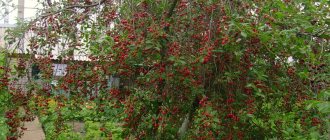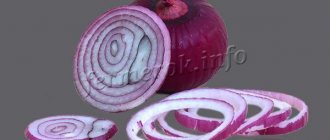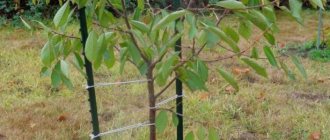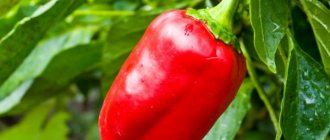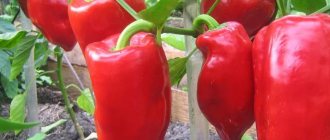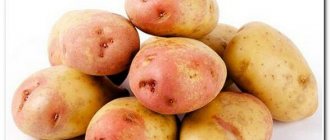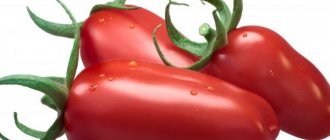Pepper Ramiro description of the variety, photos, reviews, characteristics of the fruits, advantages and disadvantages which are presented in this article, was bred in Italy. However, this variety is also cultivated in Latin America.
There are several varieties ramiro pepper varieties... They differ in the color of vegetables - red, yellow and green.
Most often, Ramiro peppers can be found in supermarkets and grocery stores. Seeing them on the shelf, many customers do not understand whether it is sweet pepper or not. The fruits have an elongated shape, therefore they are very reminiscent of Chilean pepper. Despite its appearance, Ramiro pepper has an excellent taste and can be grown in Russia.
Description and characteristics of the variety
- The Ramiro pepper variety grows well in central Russia, therefore it has gained great popularity among local vegetable growers.
- Red peppers can be grown in greenhouses and greenhouses, as well as outdoors with temporary shelter.
- Late ripening, fruits reach biological maturity 130 days after germination.
- Bushes grow up to 90 cm in height.
- High productivity. 1 bush per season gives about 2 kg of ripe vegetables.
- Peppers of this variety are susceptible to diseases such as stolbur. After infection, the leaves begin to turn yellow and dry out over time. In addition, the fruits are not formed correctly. Most often, this disease is transmitted by insects that feed on plant sap. To combat it, the bushes are treated with special chemicals that can be purchased at a garden store.
Important! To get a rich harvest of Ramiro peppers, you must adhere to the rules of agricultural technology and apply top dressing on time.
Seedling preparation
Seeds for germination should be free of visible flaws, large and not hollow. After checking, the grains are placed for 20 minutes in a solution of potassium permanganate for disinfection. Then they are laid out on moistened gauze and left for 2-3 days.
Seeds should be planted in prepared soil. To do this, you need to mix humus, sand and garden soil in proportions of 2: 1: 1. You can add 1 tbsp as fertilizer to the soil. l. wood ash. The grains are deepened 2 cm into the ground and watered abundantly. After that, the containers should be covered with foil and placed in a dark place. The air temperature in the room must be at least + 20 ° С. As soon as the first shoots appear, the containers must be rearranged to a lighted place.
See also
Description of the Kupets variety and its varieties
To read
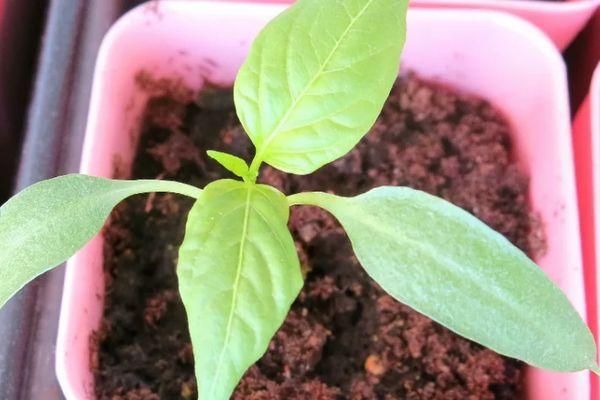
For the appearance of seedlings, certain conditions are necessary:
- moderate watering with warm, settled water;
- airing;
- daily lighting for at least 12 hours;
- the air temperature during the day should not be higher than + 26 ° С, at night - not lower than + 10 ° С;
- periodic spraying with warm water.
As a fertilizer for the root system, it is allowed to water the seedlings with a solution of potassium humate at the rate of 5 ml per 2 liters of water. After the appearance of the second leaf, the seedlings must be dived into separate pots. It should be noted that the pepper is difficult to transfer, and therefore it is recommended to immediately plant it in separate containers, and not in a common container.
It is recommended to harden the vegetable 2 weeks before planting in open ground. To do this, the pots are taken out onto the balcony and left for 2-3 hours.Gradually, the time spent in the fresh air is increased.
Fruit characteristics
- Ripe fruits can be red and yellow, green and orange shades of Ramiro peppers are less common.
- The shape is elongated, elongated, reminiscent of a chili pepper.
- The vegetable grows in length up to 25 cm, in diameter - up to 4 cm.
- The wall thickness reaches 6 mm.
- One pepper weighs on average from 90 to 160 g.
- Tastes sweeter than normal bell pepper.
- The skin is thin, inside there are small septa.
- There are very few seeds compared to other sweet peppers.
- The pulp of this variety is saturated with vitamin C, which is stored for 90 days after harvest.
- Ramiro peppers also contain vitamins of group B, H, PP, beta-carotene, trace elements, fiber.
- Resistant to transportation.
Gardeners reviews
Olga, 56 years old, Samara
Ramiro planted peppers in a greenhouse. At first I even doubted whether Ramiro's pepper was hot or not. However, I liked the variety for its sweet taste. Some of the fruits were still green, the rest ripened on the bushes. The fruit has a small mass.
Vasily, 39 years old, Samara
Ramiro first tasted peppers with friends. I liked the variety with its unusual shape. The next year I decided to put him in the country. In the beds, I have loamy soil, enriched with compost. Ramiro is a tall bush, you definitely need to tie it up. During the season, he watered peppers, loosened the ground and weeded the beds. I did not notice pests on the variety. I fed the plantings with complex fertilizers and humates. The harvest was not very big - up to 2 kg per bush. However, I was satisfied with the taste and appearance of the fruits.
Anna, 47 years old, Moscow
Ramiro bought sweet peppers in a store for preparing vegetable salads for the winter. Last year I decided to plant a variety in the country. The seedlings have sprouted well, transplanted them into a greenhouse. The fruits are elongated and resemble chilean peppers. The pulp is thin, the seeds are very small. I consider the variety to be a good alternative to the usual sweet varieties.
Growing features
Ramiro peppers are recommended to be grown through seedlings.
When and how to plant peppers for seedlings
Seeds are sown at the end of February for open ground and 2 weeks earlier for the greenhouse.
First you need to prepare the ground. You can buy it at a garden store or make your own. To do this, mix 1 part of sand and garden soil and add 2 parts of humus. The mixture is thoroughly mixed and 1 tbsp. a spoonful of wood ash in 1 bucket of soil.
Before planting, the finished soil is disinfected by keeping it in the oven for 30 minutes at 160 degrees.
Peat cups can also be used for sowing seeds, then there will be no need to pick.
Seeds of this variety can be purchased at a garden store or prepared yourself by purchasing peppers at the grocery store. According to gardeners, they also germinate well and give a rich harvest.
Advice! To improve seed germination, they are kept in a damp cloth for 2-3 days.
It is also recommended to use the growth stimulant Epin or Zircon. The seeds are kept in solution for up to 5 hours, then washed well under running water and sown in the ground.
For sowing, you can use plastic boxes or special cassettes, which are filled with prepared soil. Each seed is buried 1-2 cm, after which the plantings are well watered from a spray bottle. The containers are covered with glass or foil and left in a warm room until germination.
When small sprouts appear on the surface of the soil, the film is removed, and the containers are transferred to a well-lit place without drafts.
It is necessary to adhere to the following rules of agricultural technology:
- Daytime temperatures should be up to 26 degrees.
- At night, the temperature is kept within 10-15 degrees.
- Regular airing.
- The soil should be moderately moist.
Daylight for seedlings comes within 12 hours a day.
Important! Seedlings must be watered with warm, settled water.
If the soil is too wet, fungal diseases may appear due to which the plants will die.
Also, you can not use cold water for irrigation, so as not to create stressful situations.
In the room, it is necessary to maintain a high humidity of the air, periodically spraying the plantings from a spray bottle with warm water.
Important! To improve the formation of the root system, the seedlings are watered with potassium humate, diluting 5 ml of the product in 2 liters of water.
Picking
When growing seedlings in a common container, a pick is carried out when 2 real leaves appear on the plants. After this procedure, the seedlings recover for a long time, so it is better to plant the seeds immediately in separate cups.
10-14 days before transplanting to a permanent place, the seedlings are hardened. It is taken out into the fresh air to adapt to natural conditions. Only this should be done gradually, daily increasing the time spent in the open air.
Transplanting seedlings into the ground
The soil on the site is prepared in advance in the fall. It is well dug up and compote is added.
Advice! To improve the quality of the soil, it is recommended to add superphosphate and potassium salt, 50 g per 1 sq. m.
In the spring, the soil is also dug up and 30 g of ammonium nitrate is added to each square meter of the site. At the beginning of the growing season, plants are fertilized with nitrogen-containing top dressing to stimulate the development of green mass. After flowering, such dressings are not used.
They dig holes 15 cm deep in the ground, leaving a distance of 40 cm between them. It is recommended to leave 50 cm between rows. To facilitate the care of the plantings, it is better to plant the peppers in a checkerboard pattern.
The seedlings are well watered and, together with the earthen clod, are moved into the hole. Further, the plantings are sprinkled with soil and compacted a little. The main thing is to make sure that the root collar of the plant is level with the ground.
Young plants are watered abundantly with warm water, then they are mulched with peat or compost.
After transplanting seedlings, it is necessary to give 7-10 days for adaptation. At this time, they do not need to be watered and fed.
Watering is carried out according to the following scheme:
- before the formation of buds weekly;
- when forming ovaries 2 times a week;
- during fruit ripening every week.
For peppers, the norm is 6 liters per 1 square meter of planting. After watering, the soil must be loosened. This is done very carefully so as not to damage the root system.
The Ramiro pepper variety gives a rich harvest if fertilized on time. They are diluted with water and watered at the root.
The first feeding is carried out 2 weeks after planting the seedlings in a permanent place. For this, cow dung is used, which is diluted 15 times with water.
If you decide to use bird droppings, then it is diluted with water in a ratio of 1: 10.
Important! During flowering, the bushes are sprayed with a solution of boric acid, diluting 2 g of the product in one liter. This helps to strengthen the delivery.
In order for pollinators to fly to the plants, 100 g of sugar is added to the spray solution and the bushes are treated in the morning and evening in cloudy weather.
The second feeding is carried out after flowering. For this, 20 g of superphosphate and potassium salt are diluted in 10 liters of water. This procedure strengthens the root system and improves the taste of vegetables.
The same fertilizer is applied again after the first harvest. This will make it possible to extend the fruiting period.
Read in another article: When and how to plant peppers for seedlings: planting seeds, timing of the rule, preparation of seeds and soil, rules of care
You will be interested in: Secrets of growing bell peppers in a polycarbonate greenhouse and outdoors from seeds and seedlings
Disease Prevention and Pest Control
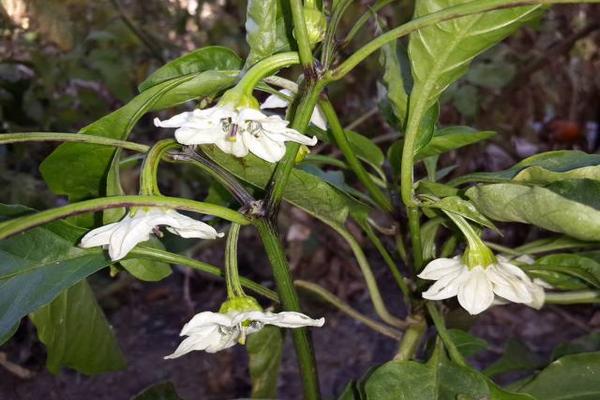

The Ramiro variety is considered resistant to various infections. Most often, problems arise when the agricultural technology of pepper is violated:
- low temperatures;
- high humidity;
- dense soil.
For prophylaxis, spraying of peppers with copper-containing preparations, infusion of boric acid, Zaslon means is used.
Treating pests with infusions of tobacco dust, wood ash, onion husks. If you follow the rules of care, Ramiro is not exposed to diseases, insect attacks.
Application
The Romiro variety gives very sweet peppers, which are recommended to be consumed fresh, added to salads and slices. However, these peppers are also suitable for canning. They make delicious lecho, sauces and dressings.
Important! Ramiro peppers do not last long, so if they are few, then it is better to freeze the sliced fruits in the freezer for later use.
Watch the video! Pepper Ramiro (in the review at 4 minutes)
Benefit and harm
Pepper contains antioxidants. He is able to thin and renew blood. Has a sedative effect on the nervous system. It is used for prolonged depression and nervous breakdowns.
Reference! "Ramiro" is able to increase hemoglobin in the blood. The fruits contain a number of nutrients and vitamins. The composition contains: iodine, zinc, nutrients, carotene, acids.
You can not abuse pepper for stomach diseases, especially ulcers and gastritis. The use of "Ramiro" in large quantities is not recommended for pregnant and lactating women.
What makes Ramiro stand out from other varieties?
Pepper has a very pleasant aroma, and it tastes insanely sweet. There is such a unit that measures the sugar level in products - the Brix indicator is called, it is usually equal to 7 units, but the indicator in our pepper, even more than 9-10 units, the sweetness is off scale.


It differs from similar varieties in that it is thin-skinned, therefore, in combination with other products, it makes the dish more tender and more pleasant to the taste.
If you are looking for a barbecue meal, then this pepper is the best product for it. Its dense structure allows it to be cooked even on the grill, and its thin skin makes it quick and easy to cook.
Advantages and disadvantages
Pepper Ramiro attracts with the following qualities:
- The indicator of sugary substances in a vegetable is more significant than that of most members of its family.
- The fruits are able to interest the buyer with an unusual appearance.
- Pepper is suitable for drying, freezing, hot and cold dishes.
- The fruits ripen well in the greenhouse and in the open field.
- Plucked technically ripe peppers can be stored for more than 30 days.
- Proper care ensures high crop yields.
- The seeds for planting can be extracted from your own fruit.
Negative characteristics of the variety:
- the plant is prone to the pillar;
- pepper is not suitable for those who like thick-walled vegetables.
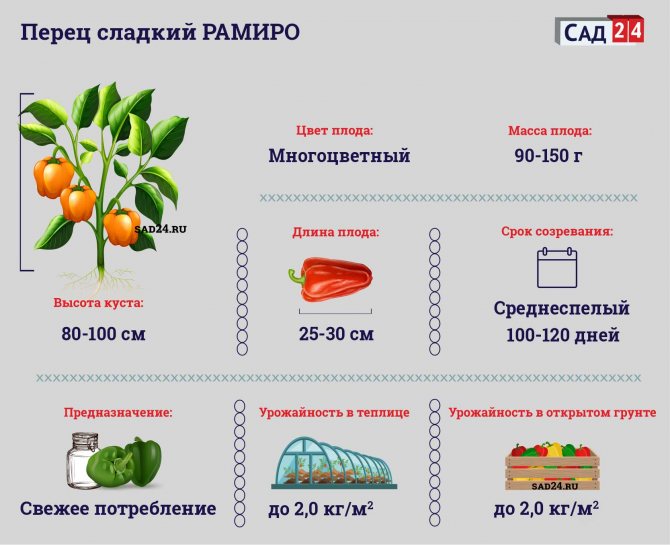

Outdoor care
Mulching
When caring for peppers planted in open ground, one should not forget about mulching, which is carried out through the use of humus and straw. Mulch will help reduce the growth of weeds and prevent the soil from drying out.
Top dressing
- First feeding perform almost immediately after planting the plant, take nettle or dandelion tops, mix with peat and mullein in equal proportions, and then add 3 tablespoons under each shrub.
- Second feeding carried out in the process of fruiting. A solution of bird droppings and water is used (taken in equal proportions), poured under each bush.
Watering
When watering, use water with a temperature of 28 ° C. Before flowering, the plant is watered once a week (in hot weather - once every 3 days). After flowering, water is added every 2 days. Use 10 liters of water per square meter. Be sure to carry out the formation of a bush.
Useful video
Find out more information about Ramiro pepper from the video:
(1 votes, rating: 5,00 out of 5)
Sometimes the original names become synonymous.So is the Ramiro pepper, palm-length and more - up to 25 cm, narrow, thin-walled - perecarp up to 5 mm, with a beautiful crease. What it is, real: who is the originator and where the pepper itself comes from, what color and shape, what it tastes like. And most importantly - cultivation agrotechnology, solving problems: planting, care, why it does not ripen and what to do.
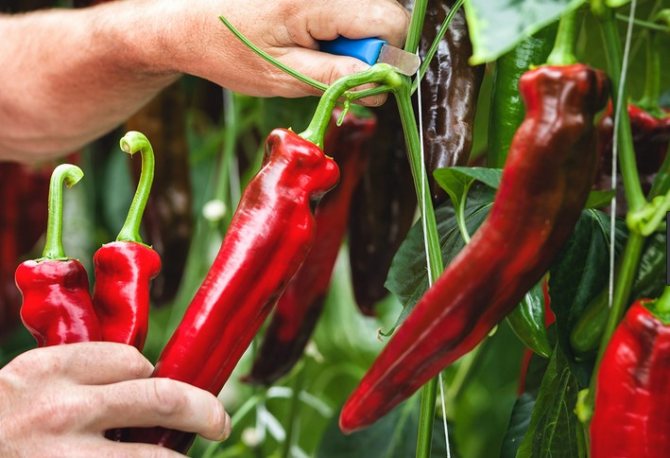

Ramiro pepper: origin, color and taste
According to some reports, this sweet pepper, grown for more than 20 years, from the oldest brand in Europe, De Ruiter, at one time taken over by Semenis, a structural division of the Monsanto concern. Since 2020, Monsanto has been owned by Bayer AG together with De Ruiter and Semenis.
And about our Ramiro: this is not a variety at all - a line of varieties, the Dolche Italiano variety (sweet Italian).
At the request of the same originator, De Ruiter, received in 1996 - can celebrate its twentieth anniversary.
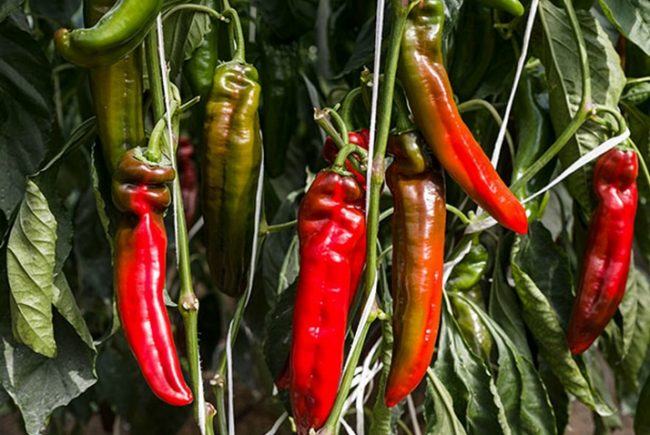

It all started with 10 test bushes. Today in Western Europe, more than 25 acres are allocated for it.
Ripening periods are medium, medium-late.
When sowing seeds for seedlings in mid-February, according to reviews, fruiting at the end of August in a film greenhouse, in tunnels.
Ramiro pepper variety: alas, not a variety
And with the origin, everything is complicated: there is no reliable data. Its characteristic feature is the creases at the peduncle. Israeli peppers, on the other hand, often have no creases. It is also produced in Holland, Italy, Mexico, Spain, Benin, Lebanon, and is packed with native Biotechnology.
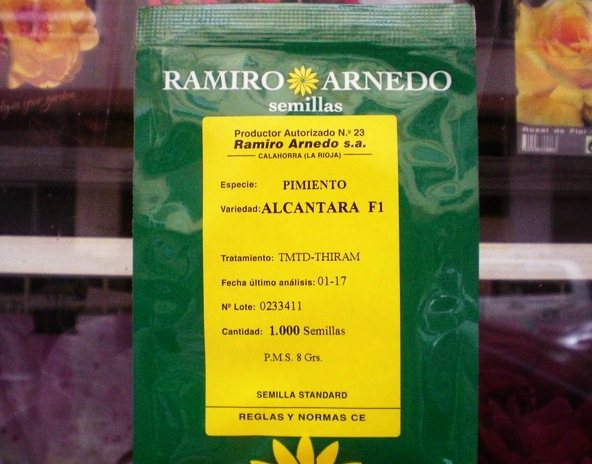

As a result, the farmers came to an unspoken conclusion: Ramiro pepper is a variety, not a variety. What it means is a group that combines several hybrid forms, called "Ramiro" for convenience and recognition. It's almost a brand: the culture is recognizable.
Or not nearly: presumably Ramiro is a trademark that distributes many varieties and hybrid forms.
Alas, presumably: all over the world these peppers are so loved that it is customary to keep silent about their origin.
Diversity is also bewildering: too much confusion. Instead of a miracle - mediocre taste, weak plants.
Is it a variety or a hybrid
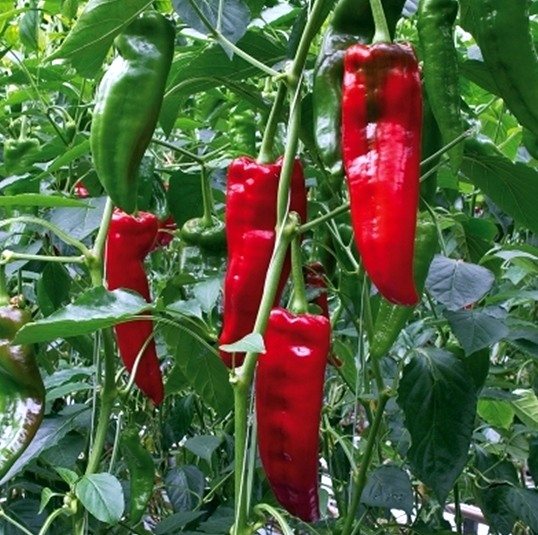

The question is even more complicated. Some professionals are sure that Ramiro sweet peppers are a variety: the seeds often retain their traits.
There are other reviews of no less professional farmers: seed material does not inherit parental qualities, respectively, it is a hybrid. Perhaps it's all about the origin.
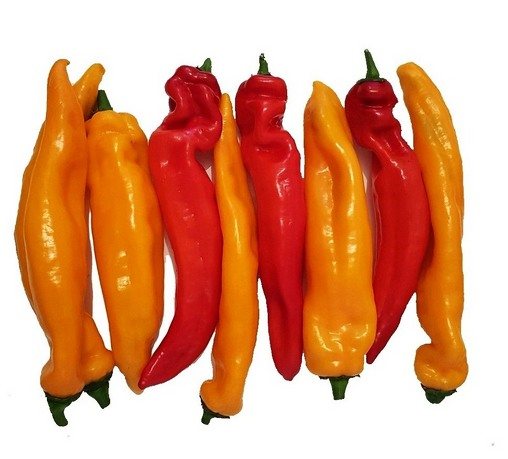

However, all the reasoning is ridiculous: each filling enterprise has its own secrets.
And nobody knows what we are actually growing. How do you choose? Buy only from trusted manufacturers that value their reputation.
Real Ramiro pepper: what it is
Many people are interested in the question: sweet pepper Ramiro or hot. Sweet is sweet. But not with the characteristic taste of paprika - delicate, soft, very juicy.
Pointed long shape, with a thin crispy skin, delicious and tender, according to gourmets. The yellow, orange forms are more juicy than the red ones. At the same time, the walls are thin and very elastic - for this they are appreciated in cooking, in haute cuisine.
It is believed to contain twice as much vitamin C and folic acid: a treasure trove of vitamins!
What color is the real Ramiro?
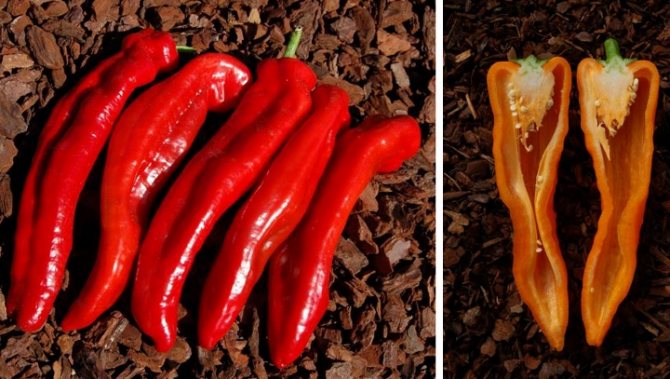

Different colors: there is red Ramiro pepper, sometimes yellow, orange.
Familiar to everyone - red, less familiar to Ramiro Yellow, Orange. There is also a green type in Europe, but it is difficult to determine the true belonging to the variety type.
On large packages of manufacturers you will often see the “tricolor” emblem. This means that all three colors of the variety have been collected.
It is a common mistake to consider an unripe Ramiro as a green cultivar, and vice versa - take green peppers for an unripe one.
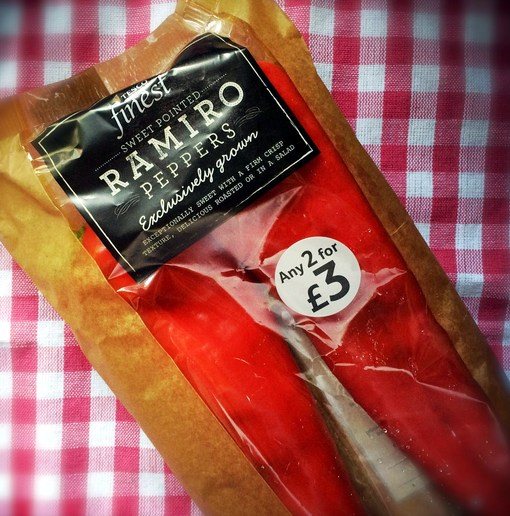

Can the seeds of purchased peppers be used for planting seedlings - in the supermarket?
It is possible, but plants can lose the qualities inherent in the form. The next reproduction, which the manufacturers call F2, may have different characteristics.
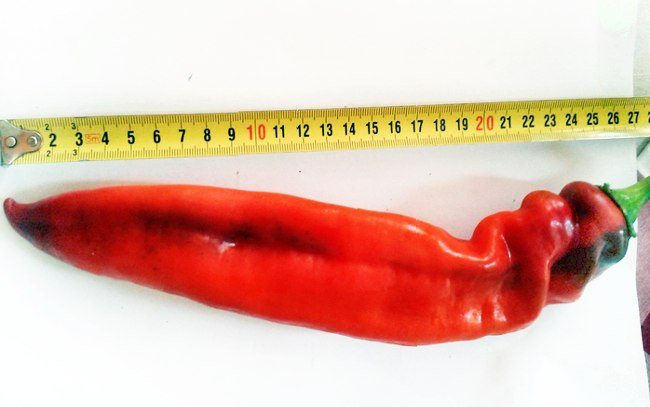

The photo shows the size of Ramiro's pepper and a characteristic feature - creases, starting at the "tail", at the stalk.
In similar varieties, with over-pollination, with the loss of varietal characteristics, creases, folds and a characteristic bend are lost: the pepper is formed smooth. If you come across a sleek and thick-walled specimen, this is not Ramiro.
Description, morphological signs of the elusive
Medium-late, with a vegetation period of 130-150 days. Grown in the Middle Lane in film greenhouses, under cover, less often in the open field less often.
Average yield - up to 2-2.5 kg per m2, up to 1-1.2 kg per bush in amateur gardening.
Pomological characteristics of the "original"
- Tall bush 80-120 cm m, bush type: forms several stems at the base. The fruits are red, yellow, orange, depending on the type.
- In full ripeness, the weight is 100-150 g, up to 10-12 pieces are formed. Reds are green in technical ripeness, when ripe they have a dark brown tint, in full ripeness they are bright red.
- The length of the fruit is 20-25 cm, the shape is elongated, with a characteristic bend and creases, folds starting at the peduncle.
- The seedbed is small, almost absent - that's why we love it.
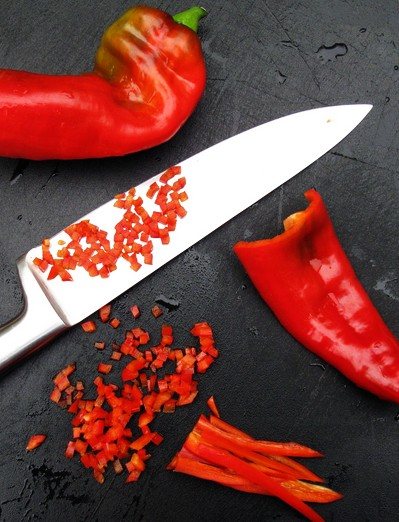

Ramiro red pepper is prized for its thin walls, thin edible skin and impeccable sweet taste.
The wall thickness (peracarp) is not high up to 5 mm - but in the opinion of a connoisseur, this is the most valuable thing. When baked, dried, in salad mixes, sauces, it is more appreciated.
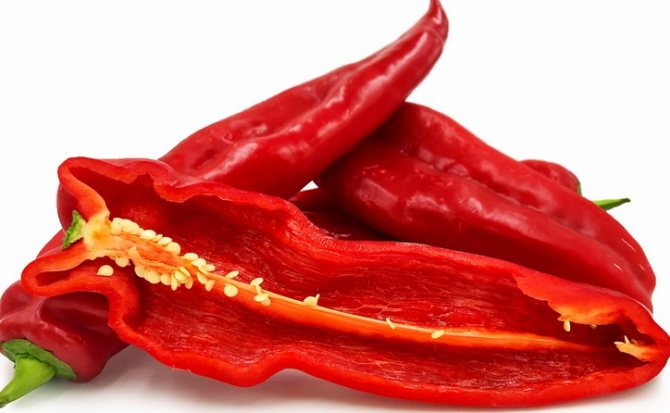

In the context.
Growing up: features, difficulties, problems and solutions
- Sowed in early to mid February in the Moscow region, in more northern regions at the end of February. Not worth it later: it may not ripen.
- To accelerate germination, the seeds are soaked in warm water. The use of growth stimulants such as Epin and others is possible, but only as a last resort: a culture with a slow development cycle, pepper stops growing after a quick start, lags behind in development in the future.
- They are grown like any seedlings at the same temperature regime, additional lighting time.
Important! Try to grow immediately in volumetric pots of 0.2 L to postpone the dive - at a later age, the seedlings tolerate it better.
And it is better to avoid it altogether by planting seeds in 0.5-1 l pots.
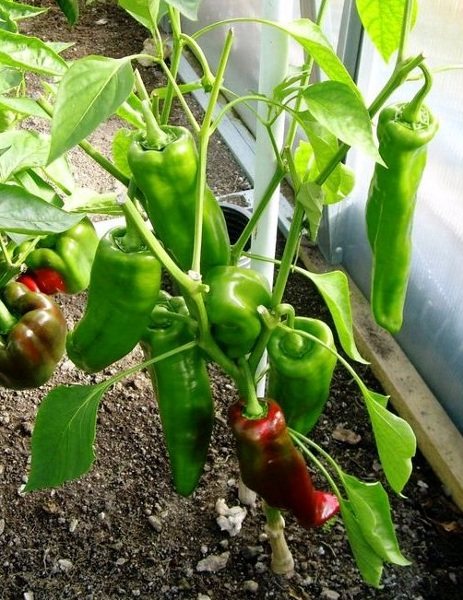

In the Middle Lane, it is more often grown in greenhouses, tunnels, greenhouses.
How far to plant? Planting pattern 40 x 50 cm - too tight for powerful bushes.
In the greenhouse, according to reviews, the pattern and planting density of 3-4 bushes per m2 in the greenhouse, up to 4-5 in the open field.
Plants need to be tied to stakes: when they reach a height of 0.5 m, they are tied.
Advice! It is better to remove the upper bud: this will accelerate ripening, will give the possibility of further growth.
- The first step is to remove the top flower. Further formation is carried out after the appearance of several stems and the appearance of 10 leaves.
- Indoors, they are formed into two or three, more often four stems, normalizing the ovary. If more shoots are formed at the base, they are removed.
- To accelerate ripening, after removal, the lower leaves are cut off - not immediately, gradually.
- At the end of July, you can cut off the flowers: they are not destined to become fruits if it is not a heated greenhouse.
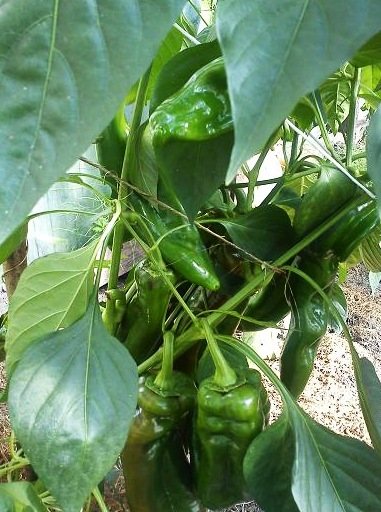

It is considered self-pollinated, but in fact, productivity is higher in the presence of pollinators. Sometimes a sugar solution is even used to attract them.
How to eat Ramiro peppers tasty and right
The simplest thing is whole, fresh. In salads, on sandwiches with feta cheese or cheese. It is a luxury, wastefulness, and a bad idea to let it into the blank: perhaps it is entirely in oil.
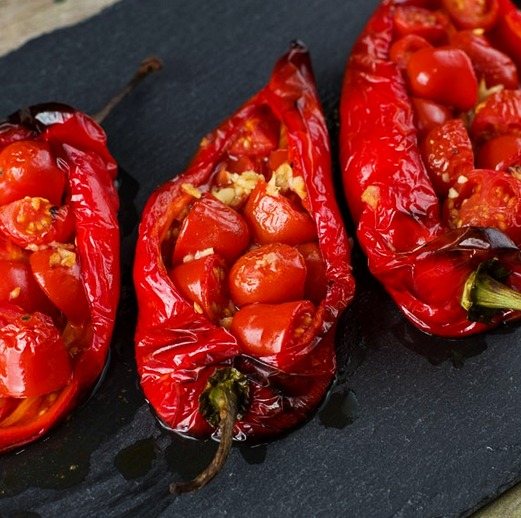

How to cook Ramiro peppers? They can be baked with cheese. Or with cherry and cheese. And with garlic.
And you can fry in a pan in a small amount of oil and without salt and spices, often turning over - using the stir-fry method.
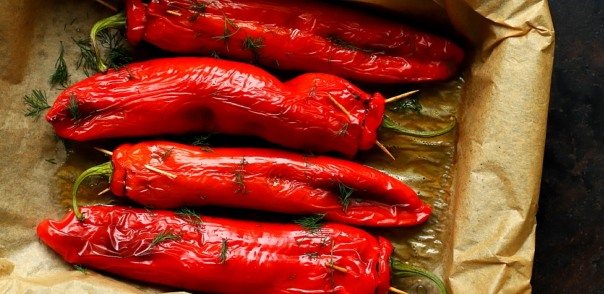

- They are grilled, baked salad is added;
- Stuff and bake;
- They are dried.


However, this is a different story - a culinary one.
Testimonials
And what they say about Ramiro pepper - the reviews are different. The lucky ones who grow the “original” respond enthusiastically: sweet, tasty, luxurious - for themselves and for sale.
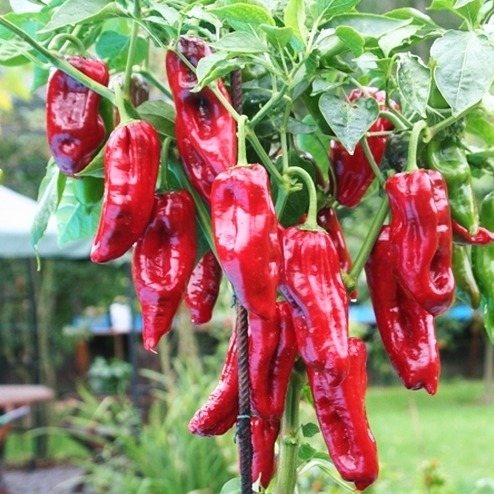

Of the minuses and disadvantages - late ripening.Of the intricacies of agricultural cultivation - the need for formation, sparse planting, early sowing of seeds for seedlings.

